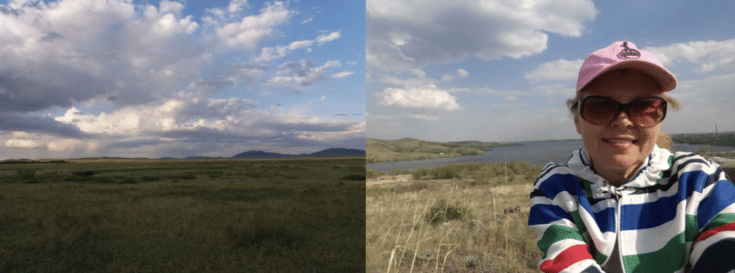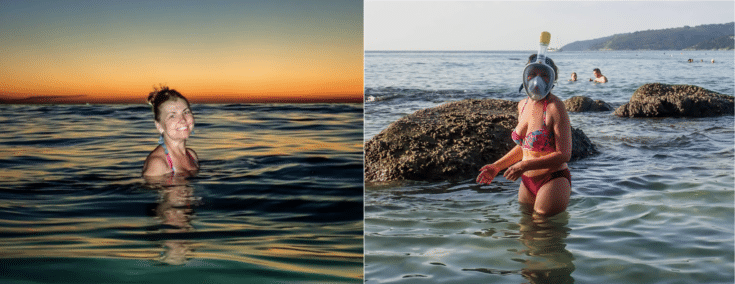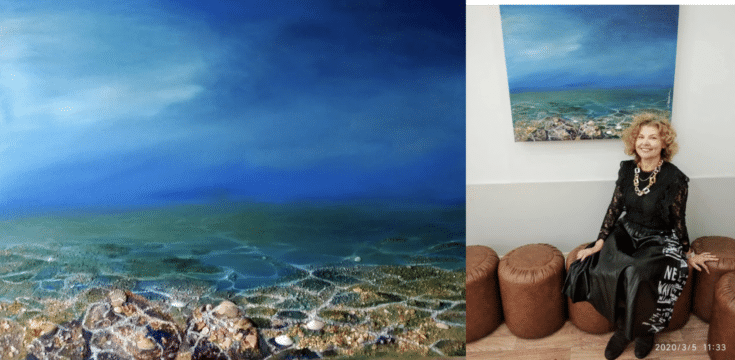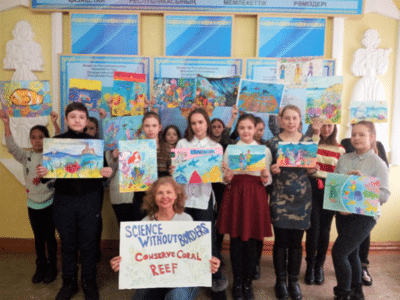Each year I look forward to our Science Without Borders® Challenge. In addition to receiving such incredible artwork, I thoroughly enjoy collaborating with so many amazing educators from around the world who encourage their students to participate. Often, I get an email from a teacher submitting their students’ artwork for the first time. These emails always convey excitement and enthusiasm for, not only their students’ art, but for the contest and its conservation message. This year I connected with Natalya Pashkova from Kazakhstan. My correspondence with Natalya moved me so much that I would like to share her inspirational story with you.
As a child, Natalya feared the water. She grew up in the Kazakhstan steppe environment – an area too dry to support forests, but not dry enough to be a desert. Her friends used to swim and snorkel in the local reservoir, but Natalya had a phobia of submerging her face in the water. During her travels to the Ukrainian and Russian Black Seas, she found the ocean to be beautiful, yet her fear prevented her from truly enjoying these remarkable bodies of water. For years she was unable to overcome this fear, and each time she tried, she would experience panic, heart palpitations, and difficulty breathing.

In November 2019, Natalya found the Science Without Borders® Challenge. After researching information about coral reefs, she discovered how corals around the world are disappearing at an alarming rate. “The fact that corals are disappearing quickly overwhelmed me,” she remembers. Natalya then started teaching her students about the threats to coral reefs and the actions that they could take to preserve them.
A subsequent vacation to Thailand had Natalya determined to see a coral reef in person, despite her fear of the water. Thanks to a full-face mask, which made her feel more protected, Natalya was able to comfortably view the underwater world for the first time in her life without fear and anxiety. Recounting this memory, she says, “My experience is small to some but significant to me. Witnessing the beauty of corals firsthand made me see how precious they really are.”

Snorkeling a coral reef left a lasting impression on Natalya. Upon returning home, she created an oil painting depicting the beauty of the ocean floor. She submitted her artwork to a regional art competition and won first place.

Natalya also brought her travel experience back to her classroom. After having shared her emotional story with her students, they were inspired to create art for our contest. When asked why she had her students enter, she said, “I was shocked by the loss of coral reefs. As a teacher, I consider it my duty to interest my young students in generating ideas for saving coral reefs.”

In my correspondence with Natalya, one of her observations stands out to me. She states, “All of my students are in their first year of study at our school; therefore, they do not have professional drawing skills. However, it is more important for them to feel their involvement in a meaningful project to save coral reefs. For this reason, I sent you all the drawings to your competition without choosing the best.”
Although this is a competition, the overall goal of the contest is not to receive the best artwork; it is to inspire people to protect and conserve the ocean. Thus, our theme for this year’s competition, Take Action: Conserve Coral Reefs, goes beyond the art and is a literal call to action, a call that has been answered and exemplified by people like Natalya. Thank you, Natalya, for creating awareness about ocean conservation and making a lasting impression on your students through art. You, and other teachers like you, are making a difference.